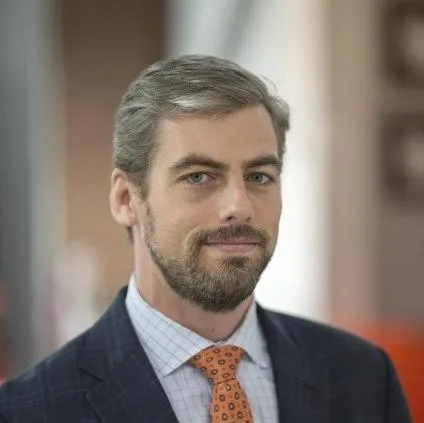The environmental conditions along the northeast coast of the US resembles those in the North Sea, and substantial knowledge transfer is possible.
The combination of offshore wind’s enormous energy potential and the requirements for new energy sources due to aging energy generation facilities sets the scene for a rapid development of the industry in the United States. The successful lease auctions conducted by the Bureau of Ocean Energy Management (BOEM) for the US East Coast with steep increase in lease prices is the litmus test of industries interest. The installation of the Costal Virginia Offshore Wind Farm (CVOW), though modest in capacity, is significant for being the first offshore wind farm on the Outer Continental Shelf to be constructed under the BOEM regulated process. CVOW truly signals the dawn of major offshore wind installations, with several projects in advanced stages of design to come into service in the coming years.
To get approval for an offshore Wind farm, US regulations require that an independent third party is appointed to certify the design, fabrication and installation to BOEM. DNV GL’s Renewables Certification has been active as a Certified Verification Agent (CVA) from the very beginning of the US offshore wind journey. The CVA is nominated by the offshore wind facility’s developer for approval by BOEM, on behalf of which the CVA preforms its activities. The CVA duties* outlined in the US code of Federal Regulations (CFR) match the systems and schemes applied for the approval of offshore wind farms internationally, though updates to accommodate US specific requirements are adopted.
DNV GL serves as CVA for CVOW and Vineyard Wind, and is nominated for several other projects.
DNV GL served as the first BOEM approved CVA for the Cape Wind Project, which successfully received approval of the CVA certified Facility Design Report (FDR) & Fabrication and Installation Report (FIR) in 2014. This was truly a milestone and although the project was eventually terminated in 2017, it paved the way for the projects currently in development today. Today, DNV GL is serving as the CVA for the Vineyard Wind and Coastal Virginia Offshore Wind (CVOW) projects, the latter of which is in the final stages of construction and will be in operation in 2020.
As CVA, DNV GL certifies the entire facility, consisting of the wind turbines and their support structures, the offshore transformer station(s), and the sea cables, both export and inter-array.
Development of well proven CVA concept from oil & gas industry to fit offshore wind
The CVA process is well known for US offshore oil and gas structures, where vast experience is available. The novelty is the adoption of the wind turbines’ specific considerations into the well proven oil and gas CVA process. Here, a notable difference is the design implications stemming from the highly dynamic loads from the wind turbine making fatigue a design driver for major parts of the structures. Further, the capital flow from a single oil and gas structure is much higher than for a single wind turbine support structure; this drives the requirement for a high degree of optimization, stripping the structure of conservatisms while maintaining a reliability with low and predictable operating costs. This development is made possible by sophisticated design tools now available for integrated, wind turbine structural designs in combination with trial and error learning from thousands of offshore foundations already installed, mainly in Northern Europe.
The offshore wind industry is under constant innovation and optimization pressure from the rapid and continuing increase in turbine and support structure size. For the CVA, this requires the ability to adapt to novel concepts and approaches if these can be demonstrated to deliver the intended safety level. DNV GL has been part of this evolution over the last three decades and has demonstrated the ability to not only adapt along with the industry and authorities, but also to lead in that innovation. Notable examples are the development of recommended practices, standards, and joint industry projects, such as PISA and ACE, in close cooperation with industry and authorities and the widespread use of these by the industry.
Combining US presence with lessons learned globally
DNV GL has a strong presence across the US with offices spanning the east and west coasts. Renewables Certification USA is located in Medford, nearby Boston, and is building up its staff and is strongly supported by the Houston office with US-based offshore experienced and trained surveyors. Our US offices are strongly supported by DNV GL’s Renewables Certifications Global team including a strong European base, which provides experience from CVA-like activities performed for most offshore wind farms under operation and at various stages of completion, around the world today.
Specific US conditions such as hurricanes have turned out to be manageable and for the northeast coast with attractive wind resources the turbines developed for North Sea conditions have been shown to be suitable for this area.
The environmental conditions along the northeast coast of the US are comparable to those in the North Sea, and substantial knowledge transfer is possible. Together with the added innovation power from US developments it will further drive down the levelized cost of offshore wind energy, allowing a truly global market to emerge.
*The CVA’s primary duties for the Facility Design review are per the US Code of Federal Regulations (CFR) 30 § 585.706: “The CVA must use good engineering judgement and practices in conducting an independent assessment of the design of the facility. The CVA must certify in the Facility Design report to BOEM that the facility is designed to withstand the environmental and functional load conditions appropriate to the intended service life at the proposed location”.


